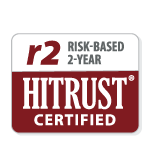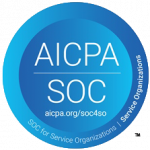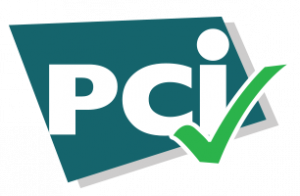
The Consumer Financial Protection Bureau (CFPB) was established in 2010 with the enactment of the Dodd-Frank Act to enforce federal consumer financial laws – including the Fair Debt Collection Practices Act (FDCPA) – and protect consumers in the marketplace.
At the end of 2020, after years of extensive work and lengthy comment periods, the CFPB published two waves of legislation. The first wave, issued on October 30, 2020, consisted of 653 pages that addressed everything from leaving messages for consumers and telephone call limitations to establishing guidelines for consumer consent to electronic communications such as text, email, and social media. We broke down the key changes of the first wave for you here.
The second wave, issued on December 18, 2020, focused largely on the model validation notice. Although this rulemaking is nearly half the size of the first at 354 pages – we still put together a summary for you. You can read the rulemaking in its entirety here: Federal Register: Debt Collection Practices (Regulation F).
Both waves of rules are set to go into effect one year after publication in the Federal Register: November 30, 2021. However, the CFPB has issued a proposal for a 60-day extension – until January 29, 2022 – to give affected parties time to comply due to the ongoing COVID-19 pandemic.
Please note that this article does not include the CFPB’s rulemaking in its entirety and is not intended to be legal advice.
Notice for Validation of Debts
The most significant part of the second wave of rules establishes a model validation notice – the first of its kind. This initial validation information is to be provided as part of, or within five days of, the initial communication with a consumer about a debt. It can be provided via mail or sent electronically when certain conditions are met.
Mandatory Validation Information:
- Mini-miranda
- Information about the debt:
- Debt collector’s name and mailing address (where disputes and requests are accepted)
- Consumer’s name and mailing address;
- Name of the creditor on itemization date (if applicable);
- Account number at the time of itemization date (truncation permitted)
- Name of the creditor to whom the debt is owed;
- Itemization date
- Amount of the debt due on the itemization date
- Itemization of the current amount due reflecting interest, fees, payments, and credits since itemization
- Information about consumer protections:
- Modified verbiage of traditional disclosures of the consumer’s right to dispute the debt
- Request the name and address of the original creditor; and,
- a date certain (pre-calculated end date of validation period) after which the debt collector will assume the debt to be valid;
- A statement that informs the consumer that additional information regarding the consumer protections in debt collection is available on the CFPB’s website at www.cfpb.gov/debt-collection;
- and finally, if the notice is sent electronically, a statement explaining how a consumer can submit disputes or requests electronically.
- Consumer-response information (segregated from the validation information/optional information) located at the bottom of the notice under dictated headings aka “tear off sheet”:
- Dispute prompts;
- Original-creditor information prompt, if applicable;
- Mailing addresses (note these are same as required under information about the debt).
Optional Disclosures:
- Telephone contact information
- Reference code
- Payment disclosures
- Disclosures under applicable law (may be on reverse side unless required to be on first page so long as referenced appropriately on first page and do not appear on reverse side of tear off sheet for consumer response information);
- Disclosures on front side of the validation notice (specifically referring to state-specific time-barred debt disclosures if applicable)
- Information about electronic communications (website and email address); if validation information is not provided electronically, a statement explaining how a consumer can submit disputes or requests electronically.
- Spanish language translation disclosures (regarding the ability to request Spanish validation notice) NOTE: if disclosure provided translation requests must be fulfilled.
- The merchant brand, affinity brand, or facility name, if associated with the debt
- If the debt is not related to a consumer financial product or service may include the name of the creditor and account number (or truncated version) at the time of the itemization date.
Itemization Date
The model notice requires not only that the debt collector set forth the current balance due as of the date of the letter – a requirement we are all familiar with but it also now requires the debt collector set forth the balance due as of an “itemization date” defined in the rules and detail how the balance has changed since that date by itemizing interest, fees, payments, and credits since the itemization date, as applicable. The itemization date can be selected among five referenced dates in the rulemaking as follows:
- the last statement date,
- the charge-off date,
- the last payment date,
- the transaction date; and,
- the judgment date.
Choosing the right itemization date for your debt type will be an important first step in complying with the model notice as well as passing this date and itemized changes, if applicable, to your debt collector at the time of placement.
Safe Harbor
For a debt collector to be entitled to a safe harbor defense with regard to its use of the model validation notice, the information in their notice must be “clear and conspicuous” and “substantially similar” to the Model Form B-1 provided by the CFPB in the rulemaking.
A debt collector who uses the Model Form B-1 complies with the information and form requirements when they include the requisite validation information whether or not they include the optional disclosures. Optional disclosures may be used so long as they are not more prominent than the requisite validation information. This is known in the industry as “overshadowing.”
The Revco Solutions’ team is staying up to date on the rules, and their deadlines, as they develop. Stay tuned for additional updates, and don’t hesitate to contact us with any specific questions.






